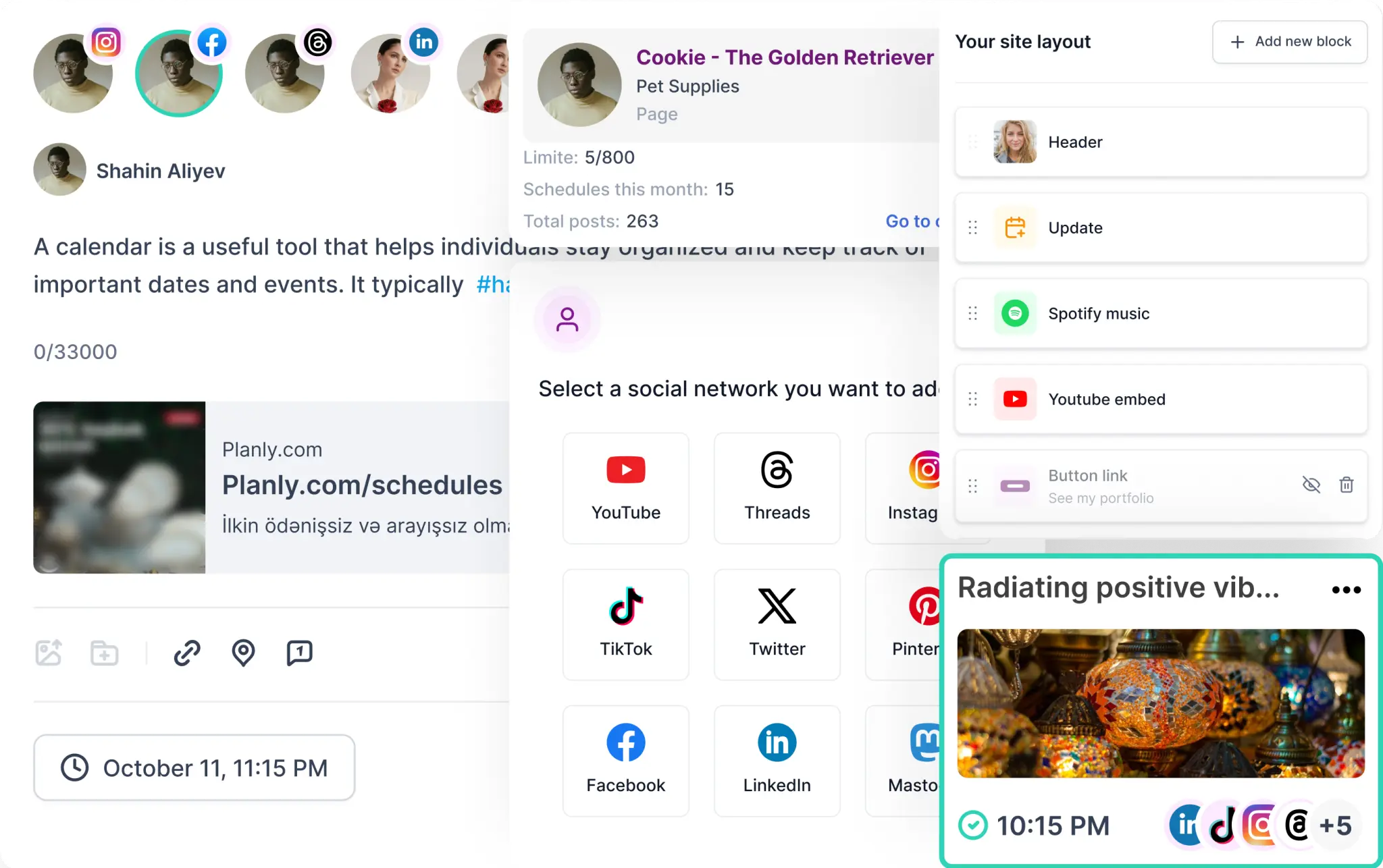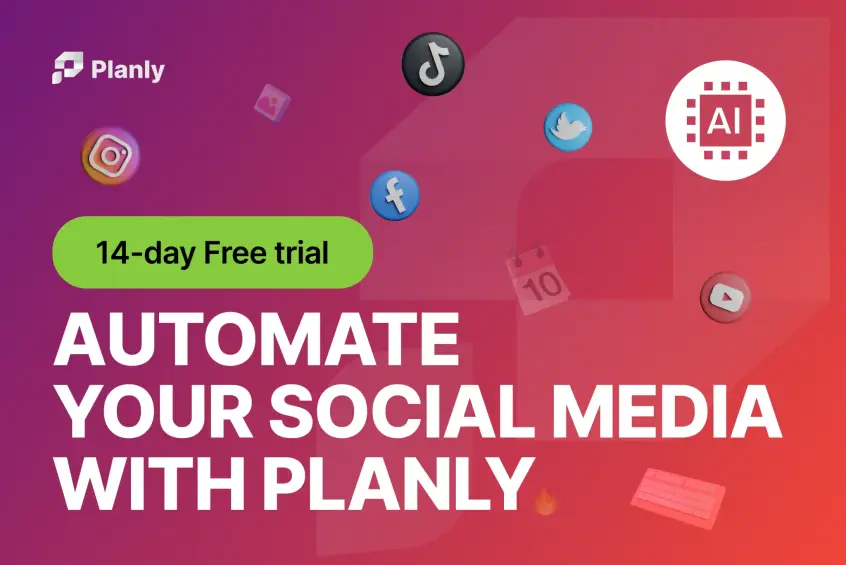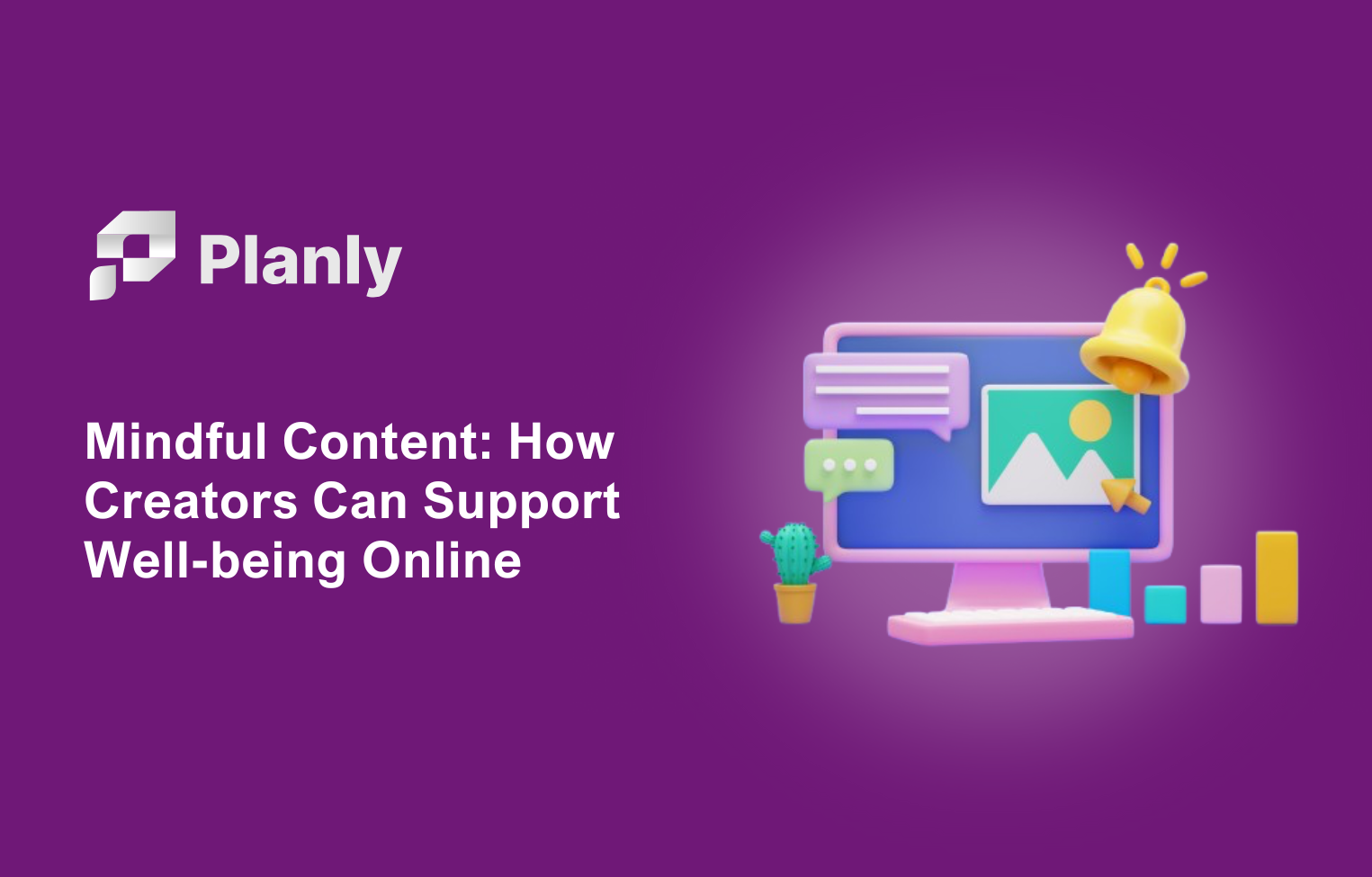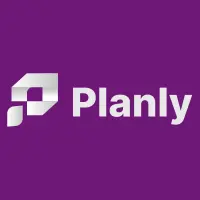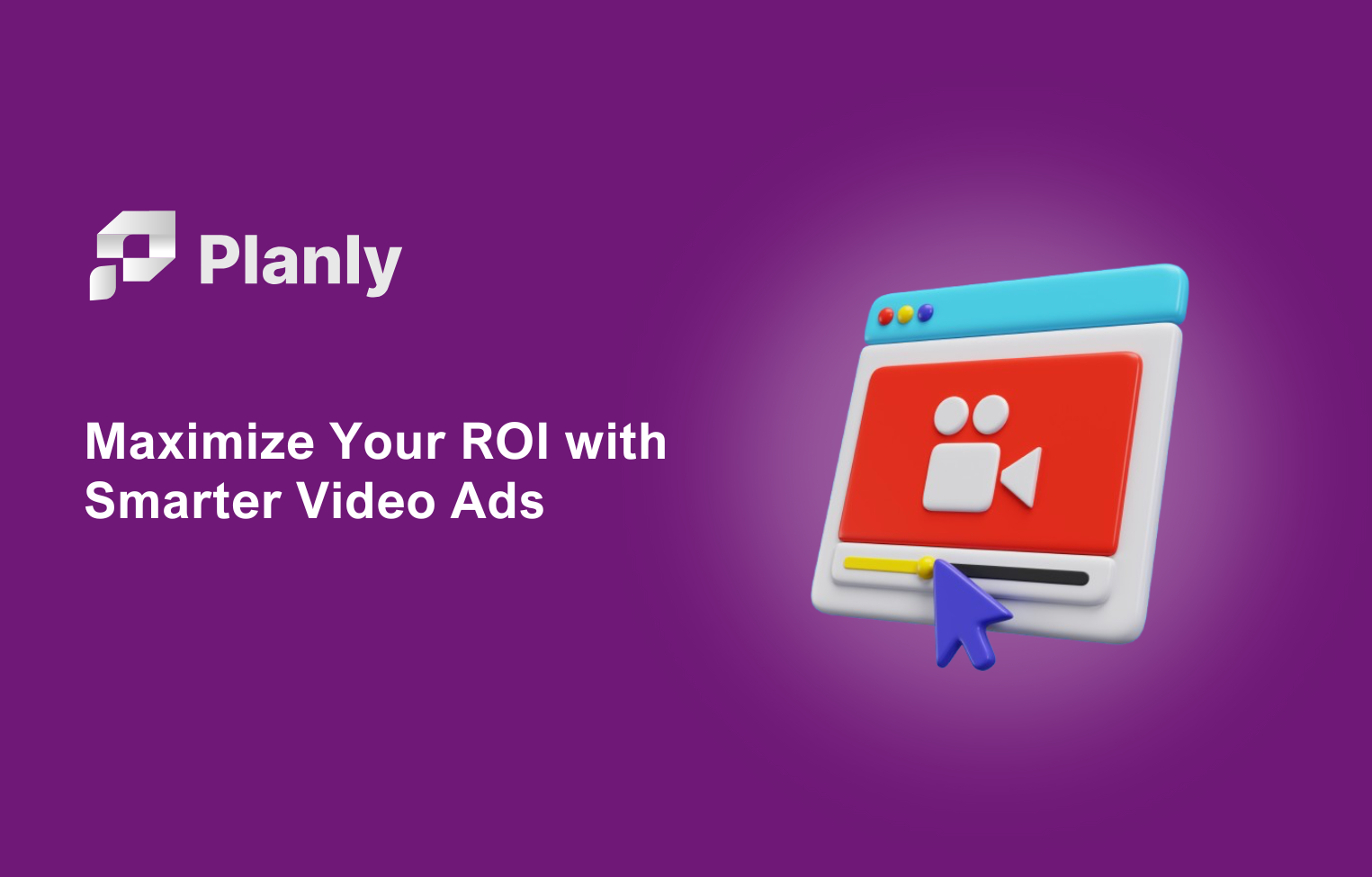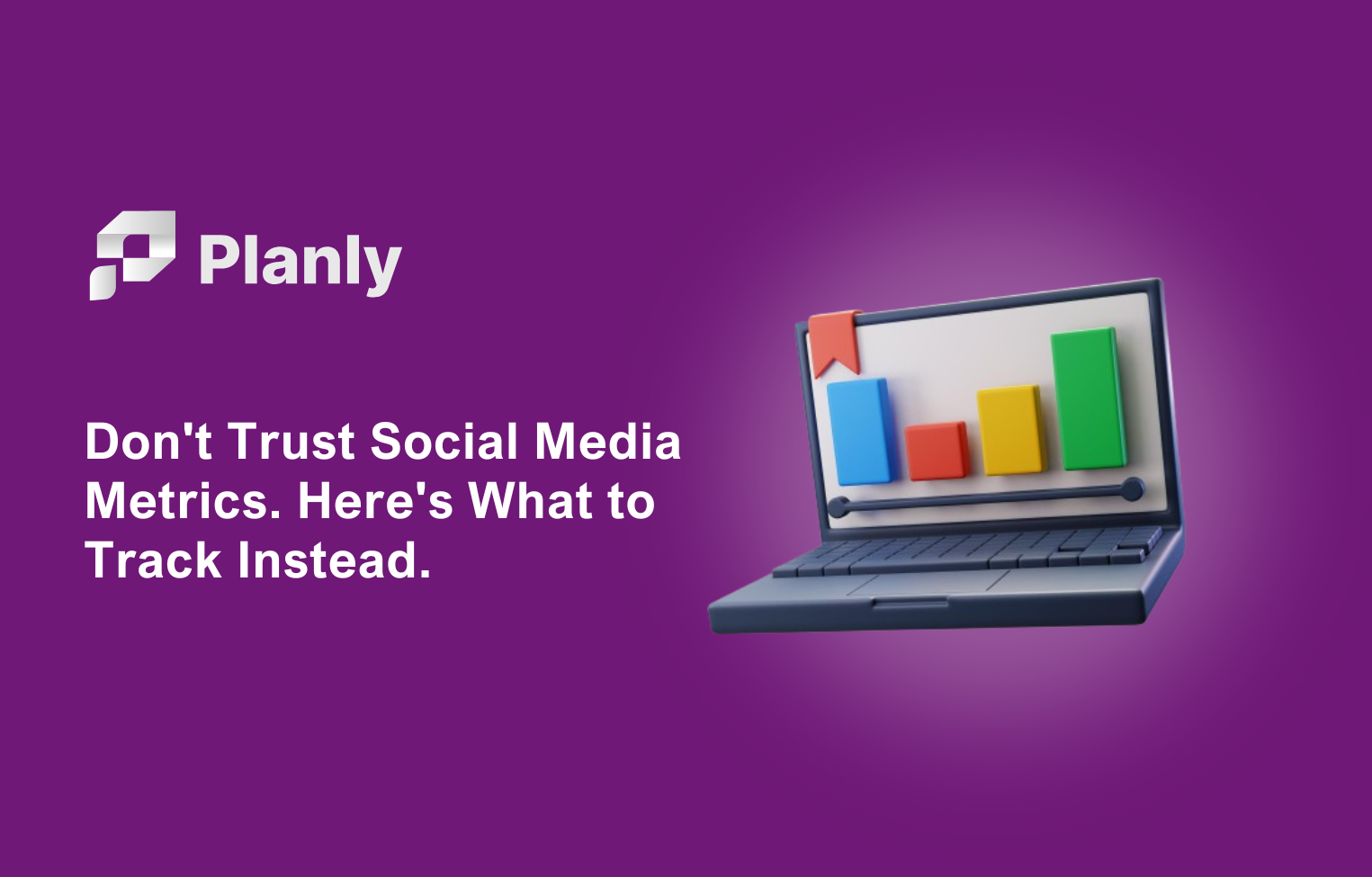Introduction
By integrating your time management tools with the apps you already use, you can streamline your workflow and boost your productivity effortlessly. In this blog, we’ll highlight the best integrations that will make managing your time a breeze and help you work smarter, not harder. Let’s dive in and discover how these powerful connections can enhance your efficiency!
Time management involves organizing and planning how to allocate your time effectively. By prioritizing tasks and setting clear goals, you can accomplish more in less time, reduce stress, and boost your career success. Mastering time management helps you stay balanced and efficient, whether you're meeting deadlines or achieving personal goals.
Social Media Planning and Management Tools
1. Planly
Planly is a comprehensive social media scheduling tool designed to streamline content management across various platforms. Users can easily sign up and connect their social media accounts, including Instagram, Facebook, TikTok, Twitter, LinkedIn, and Pinterest. Once set up, Planly allows users to schedule posts automatically, ensuring they go live at the desired times without manual intervention.
Features
1. Multi-Platform Support:Planly allows users to connect and manage multiple social media accounts, including Instagram, Facebook, TikTok, Twitter, LinkedIn, and Pinterest, all from a single dashboard.
2. Automated Scheduling:Users can schedule posts to go live automatically at optimal times, ensuring consistent content delivery without the need for manual posting.
6. Analytics and Insights:Planly provides engagement metrics and audience insights to help users analyze the performance of their posts and optimize their social media strategies.
8. Content Calendar:The content calendar view allows users to visualize their posting schedule, making it easier to plan and manage upcoming content across all platforms.
How It Works
Planly supports various content types, such as images, videos, and GIFs, and includes features like a media library for organizing assets, team collaboration tools, and analytics to track engagement and performance. Additionally, Planly offers a 14-day free trial, allowing users to explore its features before committing to a subscription. Overall, Planly simplifies social media management, making it ideal for businesses and content creators looking to enhance their online presence.ShareRewriteRelated

2. Hootsuite
Hootsuite allows you to schedule and manage social media posts across multiple platforms from a single dashboard.
Features
Content Planning and Scheduling: Create, schedule, and publish posts across multiple social media accounts from a single dashboard. The content calendar allows for easy management and bulk scheduling of posts.
OwlyWriter AI: This AI tool generates captions, content ideas, and hashtag suggestions to enhance engagement.
Unified Inbox: Manage messages from various social media channels in one place, improving customer service and response times.
Analytics and Reporting: Track post performance and audience engagement with detailed analytics to optimize future content strategies.
Social Listening: Monitor brand mentions and audience sentiment to stay informed about public perception.
How It Works
Users connect their social media accounts to Hootsuite and utilize the dashboard to create and schedule content. The unified inbox streamlines communication, while analytics provide insights into performance. By leveraging these features, Hootsuite simplifies social media management, enhancing online presence and engagement.ShareRewrite
Image

3. Buffer
Buffer is a popular social media management tool designed to help individuals and businesses schedule, publish, and analyze their social media content across multiple platforms.
Features
Post Scheduling: Buffer allows users to draft and schedule posts for various social media networks, including Facebook, Instagram, Twitter, LinkedIn, and Pinterest. Users can easily queue posts for optimal times, ensuring consistent content delivery.
Analytics: The platform provides insights into post performance, including engagement metrics and audience interactions. Users can analyze which types of content perform best and adjust their strategies accordingly.
Unified Inbox: Buffer offers a centralized inbox for managing interactions across social media channels, enabling users to respond to comments and messages from one location.
Link in Bio: Buffer includes a "Start Page" feature that allows users to create a mobile-friendly landing page for their social media profiles, showcasing their latest content or products.
AI Assistance: Buffer has integrated AI tools that help generate post ideas, rephrase content, and suggest hashtags, making content creation easier and more efficient
How It Works
Users create a Buffer account and connect their social media profiles. They can then create and schedule posts directly from the dashboard, setting optimal times for posts to go live based on audience activity.Buffer's analytics provide insights to refine content strategies, while the unified inbox enables quick audience interactions. These features simplify social media management for small businesses and creators looking to enhance their online presence.

2.Task Management Tool
1. Asana
Asana is designed to streamline project management with its customizable boards, task dependencies, and real-time updates. These features help teams stay organized, track progress, and manage deadlines efficiently.
Features
Task and Project Management: Asana allows users to create tasks, assign them to team members, set due dates, and track progress. Projects can be organized as lists, boards, or calendars, providing flexibility to match different workflows.
Subtasks and Dependencies: Break down tasks into smaller subtasks and set dependencies between tasks to ensure smooth project execution.
Custom Fields: Customize projects with fields tailored to specific needs, such as priority, status, or budget. This helps teams track important information at a glance.
Forms: Create forms to capture work requests, which are directly connected to projects for easy tracking.
Timeline View: Visualize project schedules, dependencies, and deadlines using the Timeline view, similar to a Gantt chart. This helps in identifying bottlenecks and adjusting timelines.
Integrations: Asana seamlessly integrates with various tools like Slack, Zoom, Google Drive, and Microsoft Office, allowing teams to work within their preferred applications while staying connected.
How it works
Users start by creating projects and tasks, assigning them to team members, and setting due dates. Asana offers various views (list, board, calendar) for flexibility. Teams can collaborate through comments, file attachments, and messaging.Asana's mobile apps ensure access to tasks on the go, while powerful search features help find information quickly.

2.Trello
Trello is a visual project management tool that helps teams organize tasks and collaborate effectively. Its user-friendly interface allows for easy tracking of projects using boards, lists, and cards.
responsibilities.
Feautures
Boards, Lists, and Cards: Users create boards for different projects, with lists representing various stages of progress. Cards within these lists represent individual tasks, which can include descriptions, attachments, and due dates.
Collaboration Tools: Trello enables team collaboration by allowing users to comment on cards, assign tasks to team members, and attach files, ensuring everyone stays informed.
Power-Ups: These are integrations that enhance Trello's functionality, allowing users to connect with tools like Slack, Google Drive, and GitHub for a more seamless workflow.
Calendar View: This feature provides a visual overview of deadlines and due dates, helping teams stay on track.
Automation with Butler: Trello includes automation capabilities that reduce repetitive tasks, allowing users to set triggers for actions based on specific criteria.
How It Works
Trello works by setting up boards for different projects, with each board containing lists that represent stages or categories of work. Within these lists, you create cards for individual tasks. You can drag and drop these cards between lists to reflect their status, add details, and assign them to team members. Trello also integrates with various tools, allowing you to connect it with other apps for added functionality and streamlined workflows.

3. Monday.com
Monday.com provides customizable workflows, dashboards, and task tracking to enhance project management. Its flexible setup allows teams to adapt workflows, visualize progress, and track tasks efficiently.
Features
Customizable Workflows: Design workflows that fit your team's specific needs, from simple task lists to complex project plans.
Visual Dashboards: Use interactive dashboards to track project progress, visualize data, and manage tasks at a glance.
Task Tracking: Monitor tasks through detailed boards with timelines, priorities, and dependencies.
Collaboration Tools: Share files, leave comments, and tag team members directly within tasks to enhance communication.
How It Works
Monday.com uses customizable boards to manage projects. You set up boards for different projects, create tasks, and assign them to team members. Tasks are tracked through visual timelines and status updates. The platform integrates with various tools, allowing seamless data synchronization and workflow automation.
3. Communication Tools
1. Slack
Slack offers instant messaging, organized channels, and robust integrations with various apps. It enables teams to communicate quickly and effectively, keeping conversations focused and organized.
Features
Instant Messaging: Communicate quickly with direct messages or group chats.
Channels: Organize conversations by topic, project, or team.
File Sharing: Share documents, images, and other files within conversations.
App Integrations: Connect with various tools and services for enhanced functionality.
How It Works
Slack operates through channels and direct messages, allowing teams to organize discussions and share updates efficiently. You can create channels for specific topics or projects and invite team members to join. Files and links can be shared directly within these channels. Slack integrates with numerous apps, enabling you to streamline workflows and centralize notifications and updates from other tools into one platform.

2. Microsoft Teams
Microsoft Teams provides chat, video conferencing, and file sharing capabilities, making it a comprehensive hub for team communication and collaboration.
Features
Chat: Communicate with team members through instant messaging and threaded conversations.
Video Conferencing: Host and join virtual meetings with video, audio, and screen sharing.
File Sharing: Share and collaborate on documents in real-time.
Integration: Connect with Microsoft 365 apps and other tools for enhanced productivity.
How It Works
Microsoft Teams provides a unified workspace where you can chat, hold video meetings, and share files. You create teams and channels to organize discussions by project or department. Meetings can be scheduled and conducted directly within the app, with integrated file sharing and real-time collaboration. Teams integrates seamlessly with Microsoft 365 apps, streamlining workflows and centralizing communication and document management.

3. Zoom
Zoom is renowned for its video meetings and webinars, providing a robust platform for virtual collaboration and communication.
Features
Video Meetings: Host and join high-quality video conferences with support for large groups.
Webinars: Conduct online seminars and large-scale presentations.
Screen Sharing: Share your screen or specific applications during meetings.
Recording: Record meetings for later review or sharing.
How It Works
Zoom operates by allowing users to schedule and join video meetings or webinars through its platform. You can start a meeting instantly or schedule one for a future time. During meetings, participants can share screens, use video and audio, and interact through chat. Meetings can be recorded for later access. Zoom integrates with various calendar and productivity tools, making it easy to manage and coordinate virtual gatherings.

4. Time Tracking Tools
1. Toggl
Toggl offers straightforward time tracking and reporting, allowing users to effortlessly monitor how time is spent across various tasks and projects.
Features
Simple Time Tracking: Easily track time spent on various tasks with a user-friendly interface.
Reporting: Generate detailed reports on time usage and project progress.
Pomodoro Timer: Use the built-in Pomodoro timer to boost productivity with focused work intervals.
Integrations: Connect with other productivity tools and project management apps.
How It Works
Toggl enables users to track time by starting a timer for each task or project. You can manually log time entries or use the automatic tracking feature to record activities. Reports can be generated to review time spent across tasks and projects. Toggl integrates with various tools like task management and project tracking apps, allowing seamless synchronization and providing a comprehensive view of your time management.

2. Clockify
Clockify provides robust time tracking and project management features, allowing users to monitor hours spent on tasks and manage projects efficiently.
Features
Time Tracking: Log hours spent on tasks and projects manually or with a timer.
Project Management: Organize and manage projects with detailed tracking and reporting.
Time Reports: Generate comprehensive reports on time usage and productivity.
Integrations: Connect with various productivity and project management tools.
How It Works
Clockify allows users to track time by either starting a timer for specific tasks or manually entering time entries. It supports project management by categorizing time logs and providing insights through detailed reports. Users can integrate Clockify with other apps like task managers and project tools to streamline data synchronization, ensuring all time-related activities are captured and analyzed efficiently.

3. RescueTime
RescueTime offers automatic time tracking and valuable productivity insights, helping users understand how their time is spent throughout the day.
Features
Productivity Insights: Receive detailed reports and analytics on productivity patterns and time usage.
Goal Setting: Set goals to improve focus and track progress toward achieving them.
Distraction Alerts: Get notifications about time spent on distracting activities.
How It Works
RescueTime runs in the background on your devices, automatically tracking the time spent on various applications and websites. It categorizes your activities to provide insights into productivity and identifies areas for improvement. Users can set goals for focused work and receive alerts about time-wasting activities. The data collected is used to generate detailed reports, helping you understand your work habits and make adjustments to enhance productivity.

Project Management Tools
1.Jira
Features
- Issue Tracking: Manage tasks, bugs, and user stories with detailed issue tracking.
- Agile Boards: Utilize Scrum and Kanban boards for flexible project management and sprint planning.
- Custom Workflows: Create and customize workflows to fit your project’s specific needs.
- Reporting: Generate various reports and dashboards to track project progress and team performance.
How It Works
Jira helps teams manage projects by creating issues for tasks, bugs, or features and tracking their progress through customizable workflows. Agile boards, such as Scrum or Kanban, allow teams to visualize and prioritize work. Users can set up sprints, assign tasks, and monitor progress through detailed reports and dashboards. Jira integrates with other tools and services, streamlining project management and enhancing team collaboration.

2.Basecamp
Features
1. Project Organization:Basecamp allows users to create distinct projects, each containing all relevant tasks, discussions, and files, making it easy to keep everything organized.
2. To-Do Lists:Users can create and manage to-do lists within each project to track tasks, assign responsibilities, and set deadlines, ensuring accountability and progress.
3. Message Boards:The message board feature facilitates discussions among team members, allowing users to post updates, ask questions, and share important information in a centralized location.
4. File Storage:Basecamp provides a centralized space for storing documents, files, and images related to each project, making it easy for team members to access important resources.
5. Group Chat:Real-time communication is supported through group chat functionality, enabling teams to discuss project details and share updates instantly.
6. Scheduling Tools:Basecamp includes scheduling features that display project deadlines, milestones, and events, helping teams stay on track and manage their time effectively.
How It Works
To use Basecamp, start a project with a title and description, then add team members. Create tasks, set deadlines, and assign them. Communicate via message boards and real-time chat (Campfire). Upload and share files, track deadlines with the calendar, and monitor progress with to-do lists and check-ins. Share projects with clients and manage permissions for access.

These tools offer various features to manage your tasks, monitor how you spend your time, and enhance concentration. Which features do you find most valuable for improving your time management? How will you incorporate these tools into your daily routine?
Using the right time management tools can significantly boost your productivity and efficiency. By choosing apps that help with task organization, time tracking, and focus, you can streamline your workflow and stay on top of your goals.
Maximize your productivity and take control of your time with a planly.com! Our platform offers a range of powerful tools designed to help you streamline your tasks, manage your schedule, and achieve your goals more efficiently.


